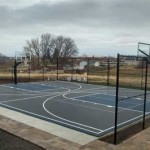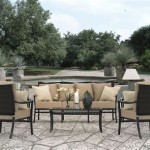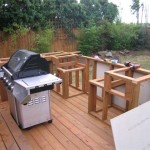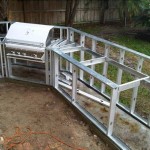Essential Aspects of Designing a Safe and Engaging Kids Outdoor Play Area
Outdoor play is crucial for children's physical, cognitive, and social development. However, creating a safe and engaging play area requires meticulous planning and consideration of essential aspects. Here are some key elements to ensure a successful outdoor play area design:
Safety First:
Prioritizing safety is paramount. Ensure compliance with safety guidelines and standards. Install impact-absorbing surfaces, such as rubber mulch or sand, and consider the age and abilities of the children using the space. Eliminate potential hazards like sharp edges, tripping hazards, and protruding structures.
Landscaping and Natural Elements:
Incorporate natural elements such as trees, shrubs, and water features to stimulate imagination and sensory exploration. Use plants that are non-toxic and not prone to thorns or sharp leaves. Encourage children's connection with nature by including elements that promote exploration and discovery.
Age-Appropriate Activities:
Design activities that cater to the developmental needs of children at different ages. Include a range of play equipment that encourages physical activity, such as slides, swings, jungle gyms, and climbing structures. Consider incorporating cognitive elements like sandboxes, water play areas, and puzzles to foster learning and problem-solving skills.
Inclusive and Accessible Design:
Ensure the play area is accessible to children of all abilities and needs. Provide ramps, wide pathways, and sensory-friendly elements to accommodate children with disabilities. Consider seating areas for parents and caregivers to enhance their involvement and create a sense of community.
Durable and Sustainable Materials:
Use durable and low-maintenance materials that can withstand outdoor weather conditions and heavy use. Opt for equipment made from recycled materials or natural fibers to promote sustainability. Regular maintenance and inspections will ensure the longevity and safety of the play area.
Supervision and Shade:
Provide clear sightlines for supervisors to ensure children can be adequately monitored. Install shade structures, such as umbrellas or canopies, to protect children from excessive sun exposure. Encourage parents and caregivers to supervise their children while using the play area.
Community Engagement:
Involve the community in the design and planning process. Collect feedback from parents, children, and local organizations to ensure the play area meets the needs of the community. Consider hosting regular events or programs to promote physical activity and social interaction.
Maintenance and Inspection:
Regular maintenance is essential to ensure the safety and longevity of the outdoor play area. Establish a schedule for inspection, cleaning, and repairs to address any issues promptly. Encourage children to report any hazards or damaged equipment to ensure a safe and enjoyable play environment.
By taking these essential aspects into consideration, you can create a kids outdoor play area that is not only safe and engaging but also promotes overall child development and well-being.

The Best Kids Garden Play Area Ideas Robert Dyas

Creating An Epic Outdoor Play Area For Your Child Style Curator

Charlie S Outdoor Play Area A The Look Emily Henderson

Ideas For An Outdoor Play Area Kids Zameen Blog

How To Create An Outdoor Play Area In Your Garden Ideas And Advice

43 Beautiful Outdoor Play Kids Backyard Inspirations For Your Perfect House In Summer Freshouz Home Architecture Decor Playground

How To Achieve An Amazing Kids Outdoor Space On A Budget Pa Life Network

10 Gorgeous Kids Play Area Designs In Your Backyard Freshouz Home Architecture Decor Kid Friendly

Kids Play Area Rubber Flooring Push Sports

46 Creative And Fun Outdoor Kids Play Areas Digsdigs
Related Posts








